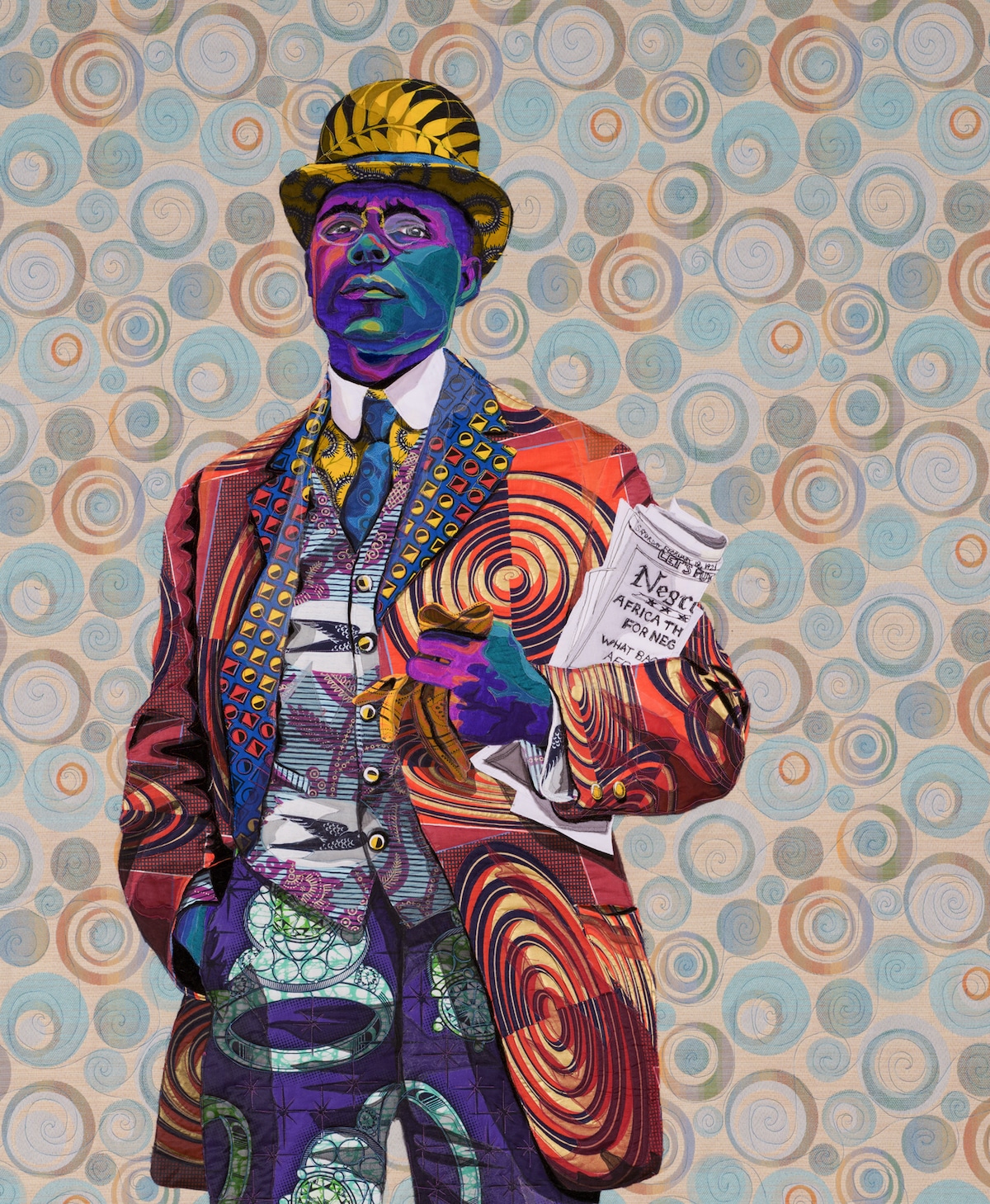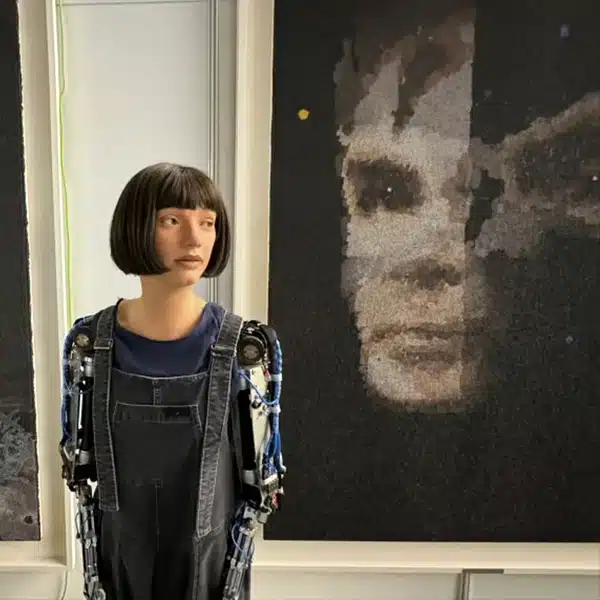
“Sisters” (detail)
Artist Bisa Butler paints with fabric. Through stunning contemporary quilts, she crafts life-sized historical portraits of Black men, women, and children whose stories may have been forgotten or completely overlooked.
Using a variety of fabrics, Butler employs a painterly approach to how she produces her work. She layers fabrics as a painter would layer pigment and pieces each element together—down to the highlight on a nose or the shading on a lower lip. This meticulous part of her artistic practice can take about 200 hours, as some of the quilts are 88 inches long. Once everything is pieced together, Butler uses a long arm quilting machine to stitch it in place.
In creating her monumental quilt art, Butler is bringing history to light. “My community has been marginalized for hundreds of years,” she writes in her artist statement. “While we have been right beside our white counterparts experiencing and creating history, our contributions and perspectives have been ignored, unrecorded, and lost. It is only a few years ago that it was acknowledged that the White House was built by slaves. Right there in the seat of power of our country African Americans were creating and contributing while their names were lost to history.
“My subjects are African Americans from ordinary walks of life who may have sat for a formal family portrait or may have been documented by a passing photographer,” she explains. “Like the builders of the White House, they have no names or captions to tell us who they were.”
Butler is both fascinated by and feels connected to the folks she depicts. “I feel these people; I know these stories because I have grown up with them my whole life,” she explains, having listened to her elders and heard about their struggles as well as their unconditional love of family.
Though represented in colorful patterned fabrics, the portraits highlight the quiet dignity of her subjects as the figures engage with viewers by looking them in the eye. “I am inviting a reimagining and a contemporary dialogue about age-old issues, still problematic in our culture, through the comforting, embracing medium of the quilt. I am expressing what I believe is the equal value of all humans.”
Artist Bisa Butler paints with fabric to create powerful portraits of Black men, women, and children whose stories are often overlooked by history.

“Sisters” (detail)

“The Warmth of Other Sons” (detail)

“Wangari Maathai (for TIME Magazine),” 2020 (cotton, silk, wool and velvet quilted and appliqué | 20 x 30 in)

“Asantewa,” 2020 (cotton, silk, wool and velvet quilted and appliqué | 52 x 88 x 2 in)

“Asantewa” (detail)

“Daughter of the Dust,” (detail) 2020 (cotton, silk, wool and velvet quilted and appliqué | 58 x 83 x 2 in)

“The Storm, The Whirlwind, and the Earthquake,” (detail) 2020 (cotton, silk, wool and velvet quilted and appliqué | 50 x 85 x 2 in)

“Africa The Land Of Hope and Promise For Negro People's of the World,” 2020 (cotton, silk, wool and velvet quilted and appliqué | 52 x 88 x 2 in)

“Africa The Land Of Hope and Promise For Negro People's of the World” (detail)

“Zouave,” 2020 (cotton, silk, wool and velvet quilted and appliqué | 54 x 88 x 2 in)

“Zouave” (detail)






















































































